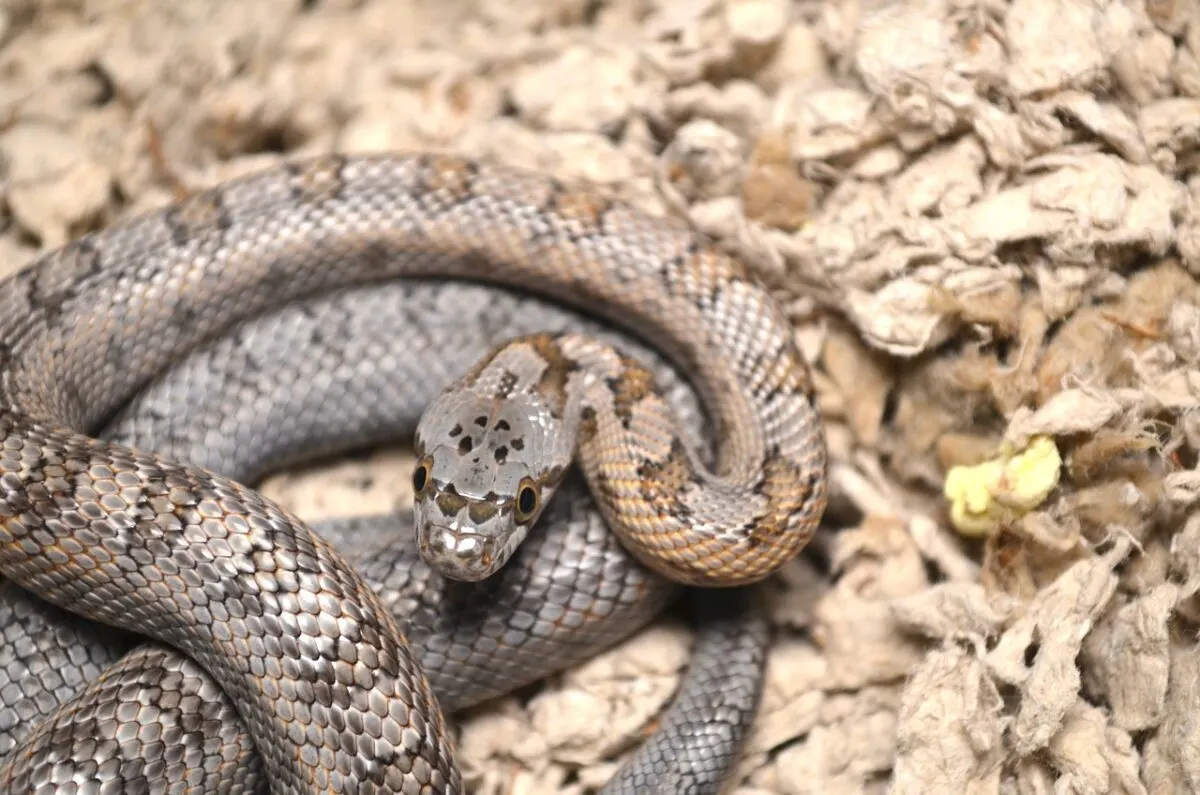The Texas rat snake is a non-venomous species of snake that is found in North America. It is a member of the Colubridae family, known for its impressive size, agility, and hunting skills. The Texas rat snake is an exciting species to study with its beautiful coloration and fascinating behavior.

Although snakes often evoke fear in many people, it’s crucial to recognize and value their role within our ecosystem. These creatures serve as vital pest controllers, particularly when it comes to regulating rodent populations. Rodents can inflict harm to crops and become vectors for diseases, making the presence of snakes beneficial in maintaining a balanced environment. Non-venomous snakes, like the one depicted here, pose no threat to humans and contribute significantly to the well-being of our ecosystem.
Let us explore all things related to the Texas Snake – its physical characteristics, habitat and distribution, behavior and diet, reproduction, conservation status, and interactions with humans. Through this exploration, we aim to deepen our understanding and appreciation of this important species, as well as all other snakes out there, and its place in our ecosystem.
If you like Snakes, also check out the Most Lethal Snake, The Inland Taipan.
Physical Characteristics
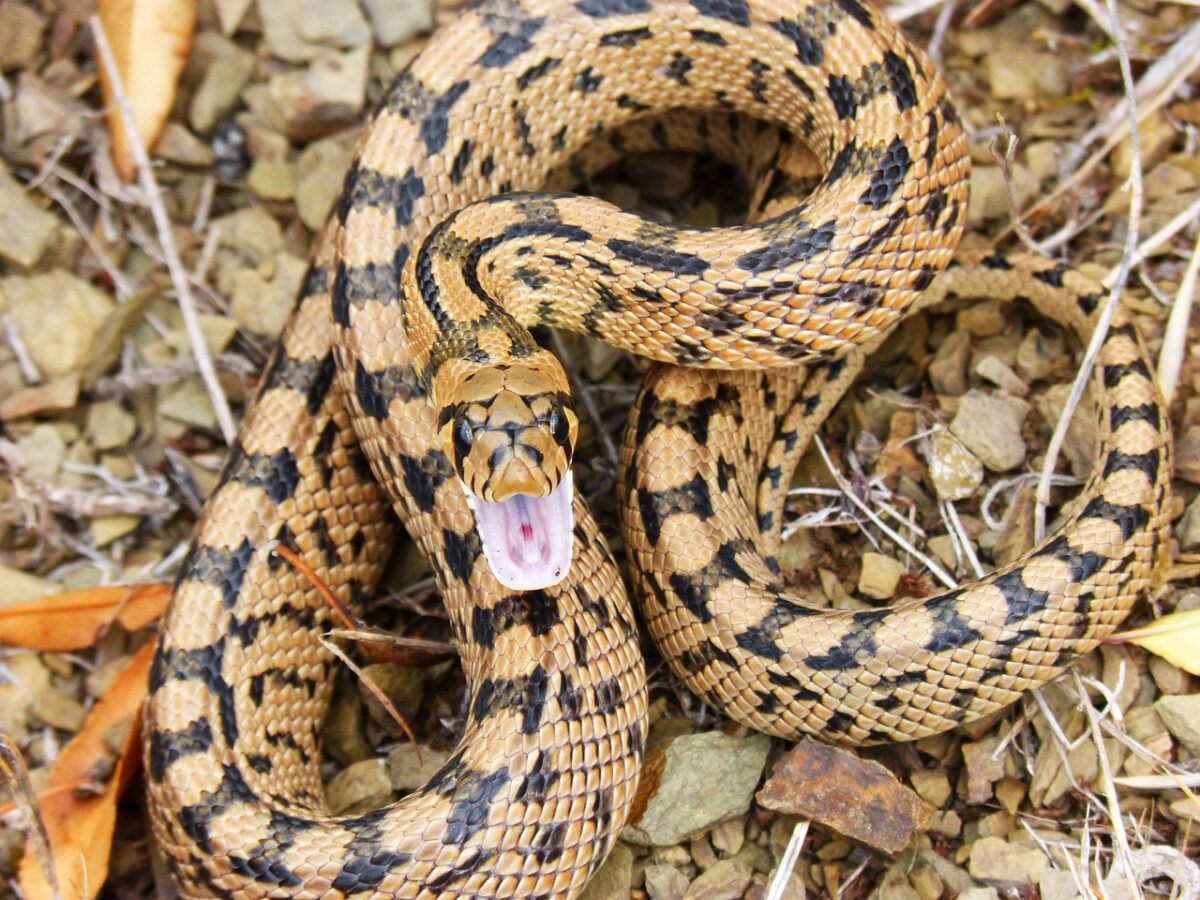
Size
The Texas rat snake is a giant snake species, with adults typically reaching between 4 and 6 feet in length. However, some individuals have been known to grow up to 8 feet. They can weigh anywhere from 1 to 5 pounds.
Coloration and Markings
The Texas rat snake has a beautiful and distinctive appearance. It has a dark brown to black coloration on its back, with light-colored scales on its belly. It also has a series of yellowish-white blotches on its back, which can be diamond-shaped or rectangular.
Unique Head Shape
One of the unique physical characteristics of this distinctive snake is its head shape. It has a slightly triangular-shaped head, which is more comprehensive than its neck. This head shape is what allows the snake to swallow its prey whole.
Habitat and Distribution
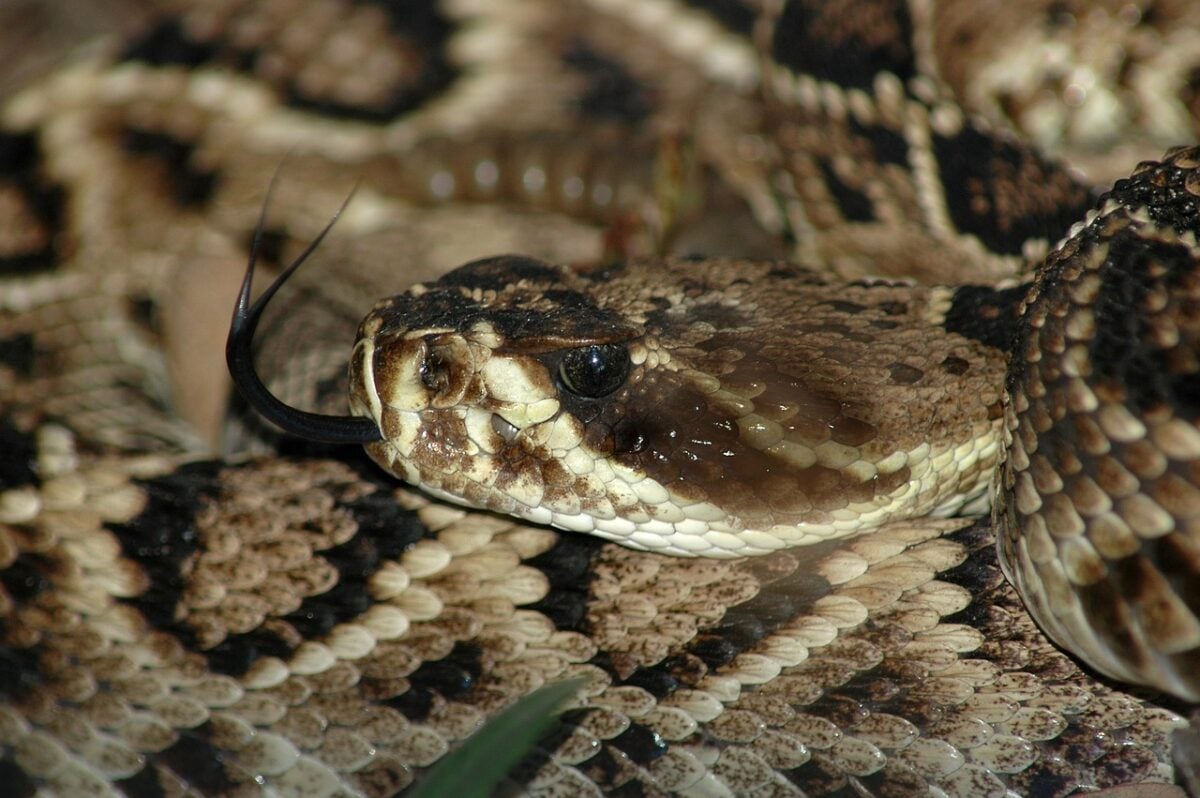
Geographic Range
The Texas rat snake is found in the southern and central United States, from Kansas and Nebraska down to Texas and into northern Mexico. They are most widespread in Texas and Oklahoma.
Preferred Habitats
It inhabits various habitats, including forests, grasslands, and rocky areas. They are also commonly found in suburban and urban areas, where they can prey on rodents and other small animals.
Adaptations
The Texas rat snake is an excellent climber and can often be found in trees and bushes. It is also a strong swimmer and can move quickly through water.
Behavior and Diet
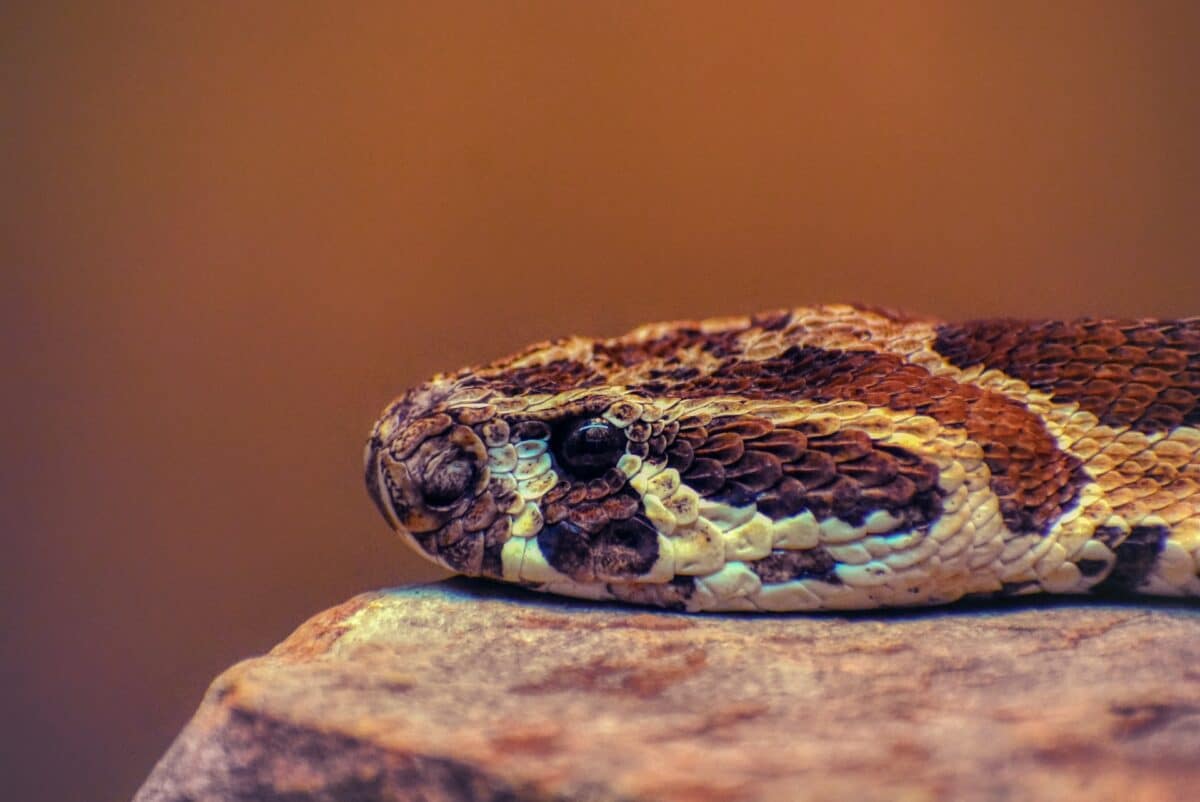
Diurnal Activity
The Texas rat snake is primarily active during the day but may also be active at night during the hot summer months. It spends much of its time hunting for prey – typically rodents, birds, and other small animals.
Predation
The Texas rat snake is an essential predator of rodents, which can cause significant damage to crops and spread disease. As a result, the Texas rat snake plays a valuable role in our ecosystem by controlling rodent populations.
Importance of Controlling Rodent Populations
The Texas rat snake is a natural predator of rodents, a common pest in many areas. By controlling rodent populations, they help to prevent damage to crops and property. It also significantly reduces the spread of various diseases that rodents pass on.
Reproduction
Breeding Season
The breeding season for the Texas rat snake typically occurs in the spring, between April and June. During this time, males compete with females, and mating can last several hours.
Nesting Behavior and Egg-Laying
After mating, the female Texas rat snake will lay a clutch of eggs, typically between 6 and 20. She will then coil around the eggs to protect them and keep them warm until they hatch, commonly occurring in about two months.
Life Cycle and Lifespan
The Texas rat snake has a relatively long lifespan for a non-venomous snake, with individuals living up to 20 years in the wild. As they grow older, their size and weight also increase.
Conservation Status
Population Stability
The Texas rat snake is not listed as a threatened or endangered species. Its populations appear stable across its range, thanks in part to its ability to adapt to various habitats.
Threats to Populations
While the Texas rat snake is not currently threatened, there is still a large possibility that it will face habitat loss and fragmentation threats. Urbanization and agriculture can destroy or alter its natural habitats, affecting its ability to find food and shelter.
Importance of Protecting Habitats
It is vital to preserve and protect their natural habitats. In this way, we can maintain forests and grasslands and minimize the impact of human activities on the environment.
Interactions with Humans
Non-venomous and Generally Harmless
The Texas rat snake is non-venomous and generally harmless to humans. While they may bite if provoked, their bites are not venomous and rarely cause significant harm.
Potential for Defensive Behavior
Like all animals, it may exhibit defensive behavior if it feels threatened. This can include hissing, coiling, and striking. However, these behaviors are typically a last resort, and the snake will try to avoid confrontation whenever possible.
Considerations for Keeping as a Pet
While the Texas rat snake can make an exciting and rewarding pet, it is crucial to consider the responsibilities involved in caring for a snake. They require a specialized diet and habitat and should only be kept by experienced owners who can provide proper care.
Key Points
| 1 | The Texas rat snake is a non-venomous species of snake that is found in North America. |
| 2 | It is known for its impressive size, beautiful coloration, and valuable role in controlling rodent populations. |
| 3 | One of the most unique physical characteristics of the Texas rat snake is its head shape. It has a slightly triangular-shaped head, which is wider than its neck. |
| 4 | The Texas rat snake can be found in a variety of habitats, including forests, grasslands, and rocky areas. They are also commonly found in suburban and urban areas |
| 5 | The Texas rat snake is found in the southern and central United States, from Kansas and Nebraska down to Texas and into northern Mexico |
Wrapping Up
While some people may fear snakes, it is essential to understand and appreciate their role in our ecosystem. Non-venomous snakes like the Texas rat snake are valuable in controlling rodent populations and preserving the balance of our environment – and pose absolutely no threat to us humans. By understanding its physical characteristics, habitat and distribution, behavior and diet, reproduction, conservation status, and interactions with humans, we can deepen our appreciation of this fascinating animal and take steps to protect its natural habitats.
Thank you for reading this article! If snakes give you the creeps, take a look at our post on another funky reptile: The Monitor Lizard or about the 33-Foot-Long Anaconda found in the Brazil Rainforest.
- Magpie Bird Is Reunited with Her Dog Best Friend - April 24, 2024
- Dog Saves Another Dog From Drowning in Fish Pond - April 23, 2024
- Man On Motorbike Rescues Cat From Highway - April 23, 2024

